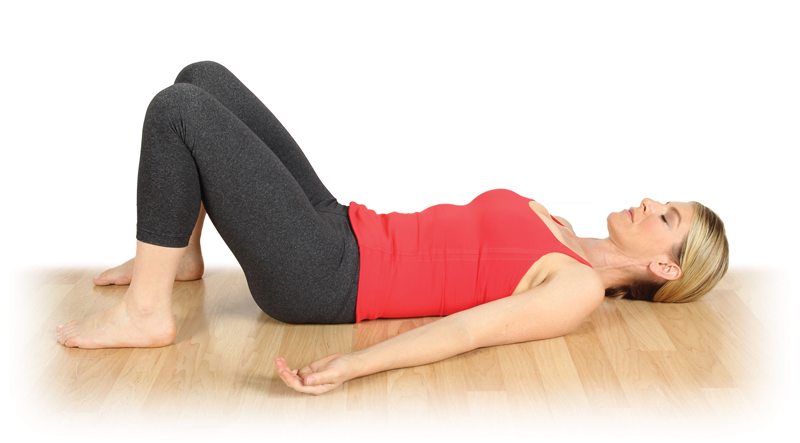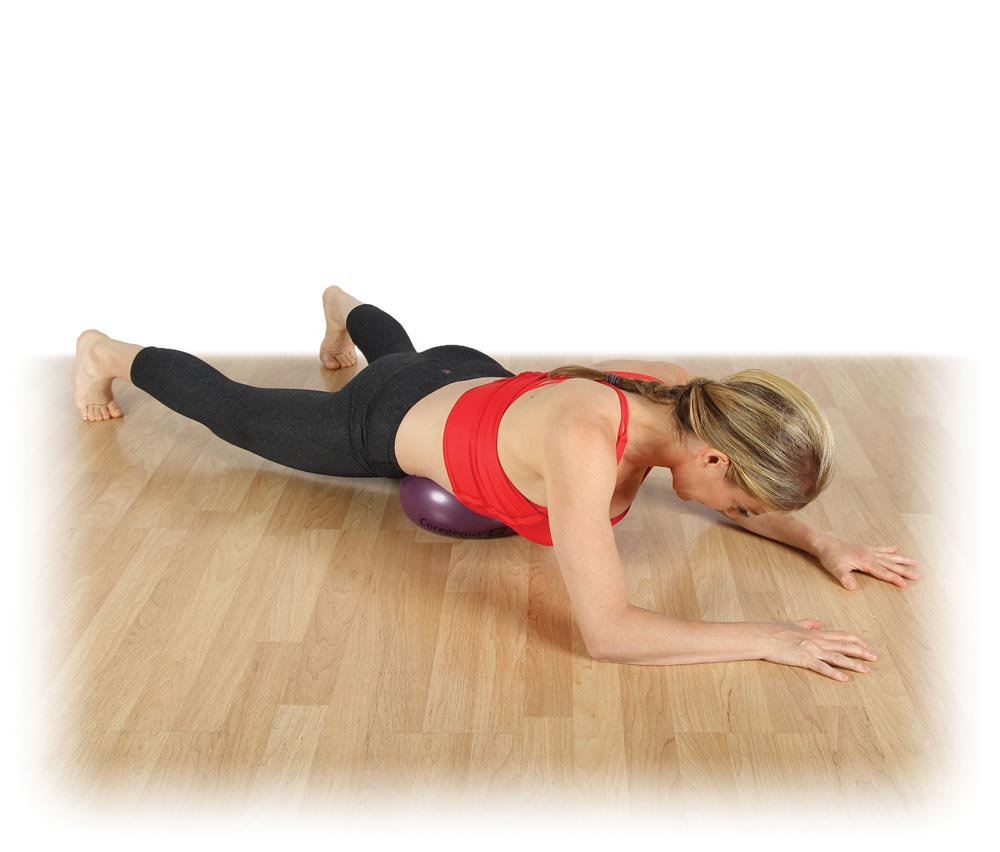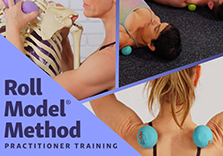
Last week, I introduced you to “the dude” in order to outline some of the diagnostic tools I used for working with this stressed-out client and his quest for sleep. This week, I will cover the Five P’s: Perspective, pace of breath, place, position, and palpation.
First: Perspective. I needed to address how he thinks. We all know thinking positive is important, but I am discovering throughout my years that we are all positive about the way we think, a not necessarily thinking positively! I am not a counselor or psychotherapist, but I do study yoga, so I referenced the Yoga Sutras of Patanjali along with what I gained from my Breath and Bliss Immersion.
Yoga Sutra 1:2–Yogas’ Citta Vrtti Nirodhah–translating loosely: the restraint of the fluctuations of the mind-stuff is yoga. In yoga, we don’t focus exclusively on the negative aspects of thought, but also the conundrum of incessant thinking which disrupts inner spaciousness and proves to be vexing for everyone.
I gave him the affirmation/reminder to detach from the barrage of information and become a passive observer of it all. To become aware enough to control the rising of his mind into mere ripples. To become proactive and consciously disallow the mind’s seduction down into the rabbit hole of worry.

Second, I addressed Pace of Breath. His breath proved to be a great barometer of the internal state of his mind. Rapid, shallow breathing usually indicates sympathetic overload, but his pattern was more curious than that. It was rapid, but deeply bracing, like he’s constantly preparing for a big punch in the belly. I sought to combine physiological down-regulating with the energetic principle of Apana Vayu. The Vayus are Seats of Prana or “powers of air.” Apana means “air that moves away.” It drives Pranic movement downward and outward. Apana governs elimination. Apana Vayu rules the elimination of negative sensory, emotional, and mental experiences. It is our ability to let go. I hoped he could harness his mind and bring its “stuff” downward.
Another P is place. I reminded him he’s safe, warm, and peaceful in this present moment helping him to breathe easefully, slowly, fully and smoothly. I encouraged a three-part breath, letting him know he has all the time in the world to simply inhale, abdomen, thorax, and chest. With focus on Apana Vayu, snatching the distractions (Citta Vrtti) traveling around in his mind and escorting them way down into the lower abdominal cavity and out. I also gave him a pace for his breath. I recommended his exhales be twice as long as his inhales tempting a parasympathetic state.
Orthostatic (posture) presentation was a hyper-kyphotic thoracic spine, limiting the depth to which he could inspire. However, the deep fascia was not completely sticky, dense, hardened, and set that way, as he had the ability at the end of each session to uncurl, uncoil, and straighten up. The Roll Model® upper back release done as part of each session, which proved to be miraculous for his condition.
Next up, position! In the past, I would have prescribed forward folds as they are the typical relaxation inducing yoga shapes. I am grateful being a Yoga Tune Up® teacher as I have additional corrective techniques at my disposal. His art has penetrating detail, as such his work puts him constantly in a forward rounded sitting position. His hamstrings are tight as well causing the pelvis to be tilted backward in a seated posture. With these issues taken into consideration I felt it best to help him literally and metaphorically unwind! Have you noticed that as soon as you recline it seems as if the weight of the world flies away, your off switch turns on, and I bet you let out a sigh of relief?!
Even more relaxing than reclining is inverting. When we invert, raising pelvis higher than heart, and heart higher than head, the body automatically shuts down sympathetic activity. The brain becomes a bit clearer and calmer. We gain a different perspective or point of view so to speak. Inversions stimulate the vagus nerve, our key parasympathetic nerve helping us rest, repair, reset and digest. And hence informs the bulk of this program.
I taught him legs up the wall on a block. As he adopted the position in our session I led him through Veeparita Korani Mudra. In Yoga Tune Up® AKA as Inverted Psychic Attitude—I guided this savasana, suggesting imagery to visualize, and directed him to locate three chakra points, navel center, heart center and throat center while injecting his breath and Prana into each one. Then subsequently slowly exhale while injecting his breath and Prana into center of brain, top of back of skull where the hair spiral is and then into crown – and continue over and over again.

Last, but not least, palpation, the 5th P. Therapy Ball massage helps to ease the resting tone of the muscles and their associated fascias. It also elevates the well- being chemicals in our brain, such as endorphins, serotonin, oxytocin and dopamine.
The design of his program was centered on this vagus nerve stimulation. The vagus nerve relates to the lungs and stomach. It is the longest parasympathetic nerve in our body. It originates in the brainstem and goes way down into the gut. It is interconnected with the nerves that act to create fascial expression, sucking, swallowing, breathing, vocalization and hearing. It meanders below the face and neck and surveys heart rate, respiration and digestion. It slides down through the diaphragm’s esophageal hiatus and plunges into organs including the stomach, pancreas, intestines, liver, spleen, kidneys and adrenals.

Now that we’ve covered the Five P’s, read on next week, as I’ll apply the five P’s to help guide “the dude” into down-regulation so he can learn how to relax and sleep better.
Liked this article? Read Wind Down and Breathe Easy: Thoracic Breathing on the Coregeous Ball











I liked reading a “case study” of how you used the 5 P’s to help your client and melded traditional teachings (Citta Vritti Nirodah) with an analytical approach (client’s natural breathing cycle was shallow and short) to client care offered by the 5 P’s. I am excited to try the 5 P approach in self-care when I am stressed and eventually with clients.
So much great information! I bookmarked this article so as to come back, read it again, and practice the 5 Ps in my life.
What a great article! The 5 P’s approach seems to give the way of looking all angles so the finale picture is more global. The way you have guided him will certainly help within his own practice. You have given him golden keys!
*I have to learn more about the vagus nerve!
Wow, such a great overview and description of the 5 P’s! I would have loved to know this information when I was extremely sick from stress and could not get my body to relax. I’m looking forward to putting some of the suggestions into regular practice and reading more about what you did to help down regulate this client’s nervous system.
Extremely informative. thank you very much for the post.
You’ve made it very easy to remember and understand with the 5 P’s.
A very helpful post that will allow me to be more conscious of my anxiety
Veeparita Korani Mudra is my absolute favourite savasana posture. With hyperlordosis I’ve always found that classic savasana doesn’t work for me as my muscles tend to want to bring me back into anterior tilt – it’s not as restful a pose. Thanks for explaining the five Ps so well!
My mind has been blown as I learn about the Vagus Highway. It is fascinating!
I have never been a good sleeper. As a kid, I laid awake for hours. I still struggle with this, however it is not as often. After I learned of YTU, I knew that these balls held an answer to my problem. Each night I have been doing some simple rolling on my back and legs, and I am seeing a difference. I can’t wait to try the vagus nerve stimulation and the inversion you recommended. Thanks for the great ideas and article.
Wow!
I am looking forward to try this 5 “p”.
To me, my breathing is so revealing my internal state!
Very well written!
Brilliant! can’t wait to give this sequence a try and experience the effects.
Thank you!
Thanks for the intro to the 5 P’s and the reminder of the relaxing benefits of Viparita.
Thank you for your article. I just recently moved to NYC and did a 200 yoga teacher immersion training. I realized in my training that relaxation classes is what has been missing in my yoga training. I am going to make an effort to not just take the hot vinyasa flow classes, but incorporate the meditiaion/pranayama and restorative yoga classes. I am so glad that I discovered this about myself. It is what I need to help me sleep better and be more relaxed.
I really enjoyed reading Part 1 & 2 of this article. Living in New York City, I know so many people who (myself included!) who can benefit from some down-regulation. I love a good, hard workout as much as the next person, but have come to realize the imbalanced emphasis we often place on “intense workouts” in pursuit of feeling good… about our bodies, about what others think of us, and about ourselves.
Hello Shari, thank you so very much for your article. I feel really inspired to help myself sleep better in time sof stress, but I aslo feel inspired to have a closer look at my savasana’s (the ones I’m teaching). Somtimes I forget how easy and safe it is for me to lay down on my yoga mat and relax, but this is not easy for all of us.
Thanks again for the inspiration!
My partner has almost the exact issues like this person. I introduced him to massage therapy balls but I can definitely show him the importance of “place” and “palpation” thank you for sharing.
Great overview in helping “the dude” with his sleep issue. I find many of my students have trouble falling asleep at night and these five P’s will definitely come in handy as a tool to share. Blessings!
Very grounding and informative, thank you!
Thank you for the great article and sharing 5 Ps. I haven’t taken Breath and Bliss course and definately want to take one.
Thank you for the great set up for understand these grounding processes. Namaste
Hi Shari,
Wow, the 5 P’s are really interesting! I’m looking forward to integrating these techniques into my own practice. Would you mind speaking a bit more to how you coached him, “to become aware enough to control the rising of his mind into mere ripples. To become proactive and consciously disallow the mind’s seduction down into the rabbit hole of worry”? Are there specific techniques or affirmations that you like to use here? Thanks in advance!
I enjoyed reading the article as I have my own problem going to sleep soundly for years because of my turned nervous system and this is going to be a good reminder for myself and my students.
This was so refreshing- to learn all about the five P’s- and also how you tied in the yoga sutras to your teaching.
Lots and lots of awareness being offered:))
What an insightful and introductory article into the 5 P’s. I am halfway through my YTU level 1 program and we just touched on breath on our last day. It sounds like the Breath and Bliss would be a great course to take afterwards, I’m definitely intrigued to know more.
What a delightful article Shari. A balanced approach to assist the dude using philosophy, movement, ball therapy, analysis, etc. It sounds like he is open to the potential that you are providing him. Despite all of the anxieties that have added up to his current state, his receptivity will clearly be the blessing that allows his health to improve. Speaking of that, it’s past midnight on the date that my final is due and I need to get myself downregulated so I can wake up in the morning and finish everything up with clarity.
So exciting to read about the vagus nerve and i can´t wait to explore it more this summer as i take the breath and bliss immersion :-). Seems to be the king & queen for activating the parasympathetic nervous system.
This is such a great way to assess and help people. I will most definitely add Breath and Bliss Immersion to my bucket list. How lucky are we to have this information shared with us that we can share with others and make a real difference!
WOW! What a beautiful article! You were spot on with the knowledge from Breath and Bliss and every time I hear ‘Vagus Nerve’ I get excited! In yoga training we learned inversions were ‘good for you’ but I could not tell my students why…until after the Immersion! I text my Uncle who came to the class and ribbed me for not giving him sufficient reasons why viparita karani was good for his health, but I sure did text him the scientific reason why a week ago! It is a confidence booster to go in depth about why we instruct poses!
I was anxiously awaiting the second part of the last article to hear more about your client and what poses/techniques you worked with. Thanks for sharing the 5 P’s. I especially liked the reference to the Yoga Sutras this is of one of the greatest challenges that a lot of people have. You can really see how your clients mental and emotional body manifested in to physical. Goes to show that we really do hold our story within our tissues. Unraveling that can be both invigorating and very challenging. Also legs up an imaginary wall is something I do before bed every night. It is such a great way to settle the events of the day.